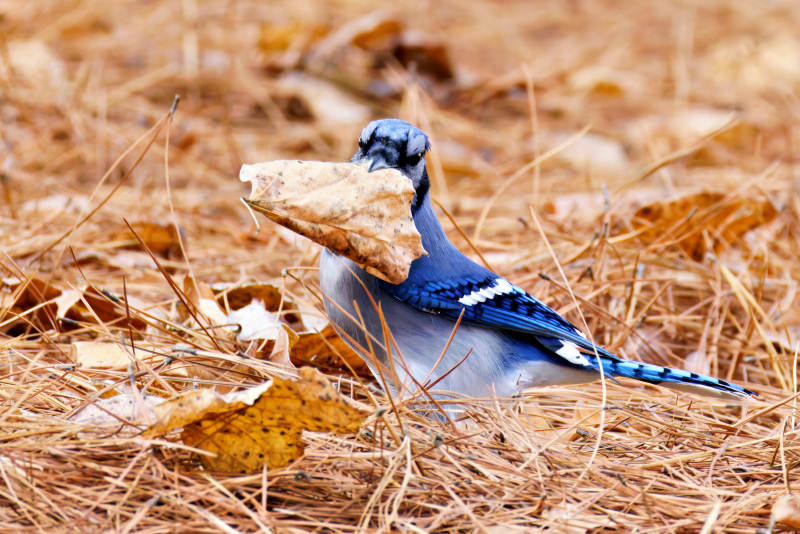As I sat on my deck a few days ago, a Blue Jay dropped from a nearby tree and landed in the leaf litter. I saw it move quickly, and I realized it was busy with a stash. This was my first close look at Blue Jay caching, and it was fun to watch.

Wildlife Notes
The jay carried something in its beak and slid it under a curled brown leaf. It then gathered more leaves and layered them over the spot. Blue Jays often store food during fall, and this simple act helps them get through leaner months. They hide seeds, nuts, and other small items in shallow spots on the ground, in planters, or by tucking them into tight spaces.
Blue Jays usually work fast. They often cover a cache with leaves or grass to reduce attention from other birds or mammals. Their memory helps them return to many of these stash points later, though some items get left behind. Those forgotten seeds can sprout, which is one reason Blue Jays play a role in moving trees across a landscape.
Smart Moves
I have seen Blue Jays pause when another bird watches them. They may act like they are hiding something, then shift to a new place once the coast is clear. This behavior seems to reduce theft from other wildlife. It also shows how aware they are of their surroundings.
If you want to see another moment of Blue Jay decision making, take a look at Blue Jay vs. Squirrel | An Acorn Heist?
Watching this jay reminded me how many small moments in nature happen right at our feet. A simple act like covering a seed with a leaf is part of a long chain of survival and renewal.
Photography Notes
I photographed this jay from my deck. I stayed seated and let the bird move at its own pace. The leaf litter gave good color contrast against the jay’s blue feathers. Light was bright and steady, which helped keep the subject sharp even at 800 mm.
Settings
- Camera: Canon EOS R5 Mark II
- Lens: Canon RF 200–800 mm
- Focal Length: 800 mm
- Aperture: f/9
- Shutter Speed: 1/1000 second
- ISO: 6400
- Exposure Compensation: +0.7
- Support: Handheld
The 1/1000 shutter was fast enough to freeze the jay’s quick movements. I like how the curled leaf fills the frame and shows the moment the bird covered its cache.
Closing Thoughts
I enjoy watching Blue Jays work the leaf litter each fall. Their caching habits offer a good look at how wildlife prepares for the season ahead.

Hi Steve,
I was puzzled about finding uneaten peanuts still in the shell inside my fenced backyard. Then one day I saw a Blue Jay fly by with one in his mouth. I just thought he must have dropped them, but now I know. He was caching them in a safe place. Guess I will quit picking them up.
Thanks for sharing.